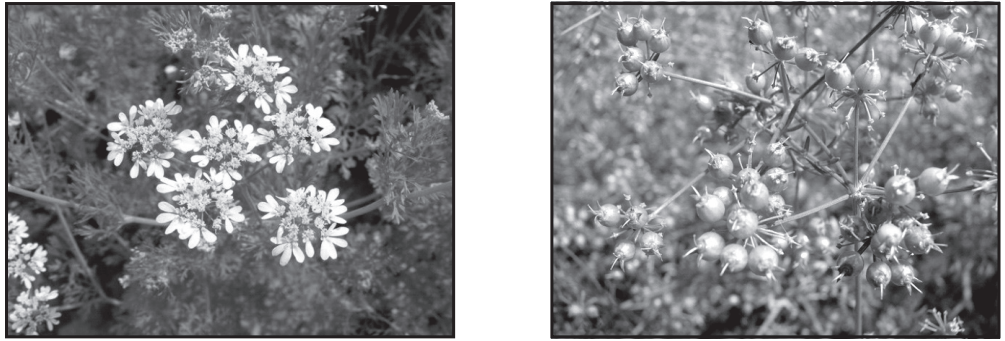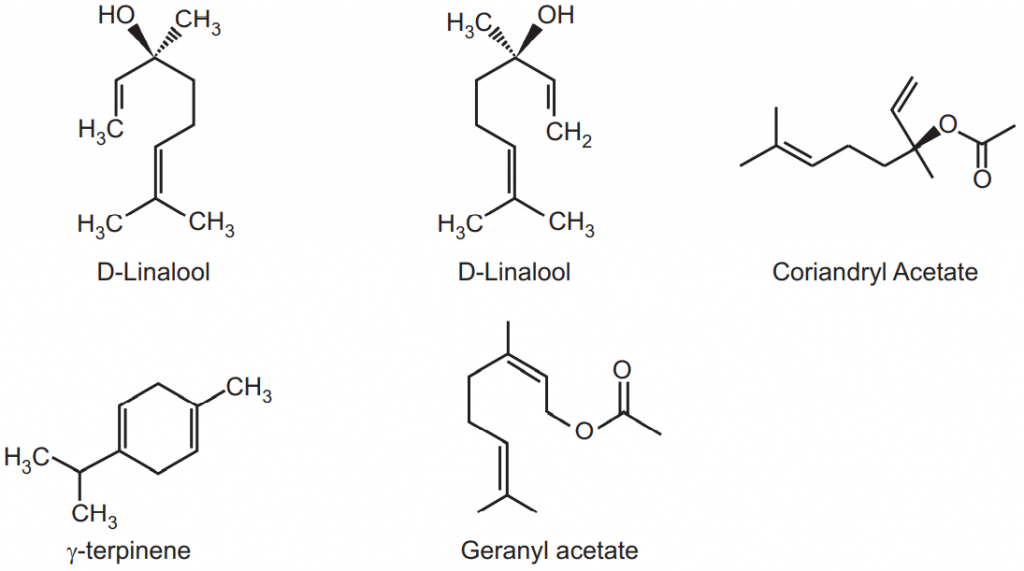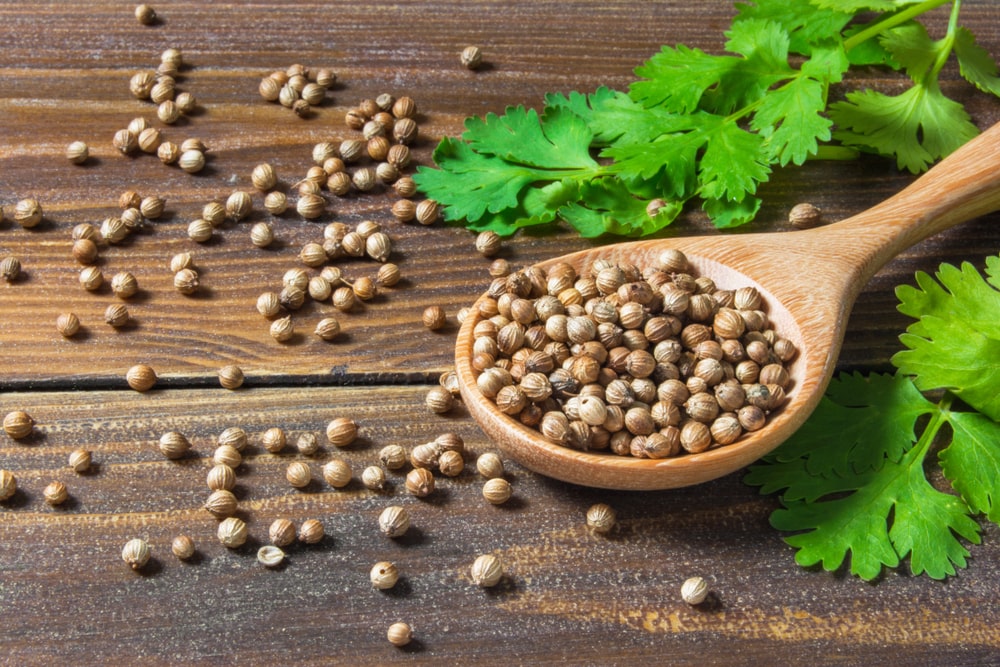Coriander is an annual herb in the family of Umbelliferae. It is also known as Chinese parsley, dhania, or cilantro. All parts of the plant are edible, but the fresh leaves and the dried seeds are the parts most traditionally used in cooking.
- Synonyms: Dhaniya fruits, Coriander fruits, Coriandrum.
- Biological source: It consists of dried ripe fruits of Coriandrum sativum Linn.
- Family: Umbelliferae.
- Geographical source: It is cultivated in Europe (mainly in Russia, Hungary, and Holland), Egypt, Morocco, and India (mainly in some states like Andhra Pradesh, Maharashtra, West Bengal, Uttar Pradesh, Rajasthan, and Jammu and Kashmir).
Cultivation and Collection of Coriander
Table of Contents
Coriander is cultivated as both Ravi and Kharif crops in India. It is grown as a mixed crop with wheat, grain, jowar, onion, sugarcane, cotton, brinjal, etc. For cultivation purposes, it needs about 15 to 20 kg of fruits per hectare area. It needs light to heavy black soil and calcareous soil for cultivation. Coriander fruits are sown by drilling method and within 100 days the crop is ready for harvesting. Few varieties like J-16, J-214, K-45, and New Pusa give better yield per hectare. The fruits are sown in March or soon. The plants achieve heights up to 45 to 60 cm and larger. The plants are grown in rows by keeping a distance of about 50 cm apart. Harvesting should be done in August. The umbels may be cut off with scissors when they are ripened. For larger fields ‘Scythe’ or ‘Mower’ may be used. The cutting may be done early in the morning to avoid the loss of fruits. The collected fruits are spreaded over sheets for drying in sun. After about 48 hours thrashing should be done. After thrashing the fruits are dried in warm air in shade. After drying the fruit loses its pungent foetid smell and acquires a warm agreeable odour and sweet taste. After drying the fruits are stored in well-closed containers because they are highly susceptible to deterioration from insects. About 70 to 75 percent world’s requirement of coriander is fulfilled from India. The Rajasthan state produces nearly 70 percent of crop demand from India.

Macroscopic Characters of Coriander
- Colour: Brownish-yellow.
- Odour: Sweet, aromatic.
- Taste: Spicy.
- Size: 3 to 5 mm in diameter.
- Shape: Subspherical, cremocarpous fruit.
Extra features:
Each mericarp has five wavy inconspicuous primary ridges and four straight prominent secondary ridges. The seed is coelospermous. The oil possesses specific gravity 0.870 to 0.885, optical rotation +8° to +14°, and refractive index 1.462 to 1.472.
Chemical Constituents of Coriander
It contains volatile oil (0.8 to 1 percent), fixed oil (13 percent), and proteins (20 percent). The volatile oil contains nearly 90 percent D-linalool (Coriandrol), coriandryl acetate, traces of L-borneol, geraniol, pinene, etc. The other constituent is Vitamin A.
The fruits contain up to 14 ml/kg essential oil with (+)- linalool, camphor (4-6 percent), geranyl acetate (1 to 3.5 percent), γ-terpinene (2 to 7 percent), and other monoterpenoid hydrocarbons.

The fruits and fruit oil is used as an aromatic, carminative, stimulant, flavoring agent, along with purgative uses in the prevention of the gripping effect. It is used as an anti-spasmodic.
Adulterants of Coriander
Bombay coriander, Fenugreek seeds, cereal fruits are used as an adulterant. The Bombay coriander fruits are 5 to 8 mm in length and 3 to 4.5 mm in width, ellipsoidal, and contain less volatile oil.
Varieties of Coriander: Three varieties can be best distinguished by the determination of the number of fruits per gram.
- English coriander: These have the finest flavor contain nearly 98 fruits per gram and not less than 80 fruits.
- Russian and German coriander: These are richest in oil (up to 1 percent) contain an average of 160 fruits per gram and not less than 130.
- Mogadore coriander: These are the largest, contain less oil. Nearly contain 66 fruits in one-gram and not less than 80 fruits.
Make sure you also check our other amazing Article on : Cassia Cinnamon
